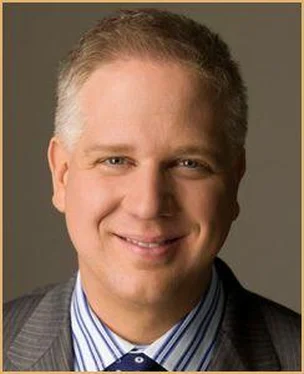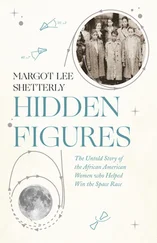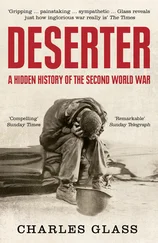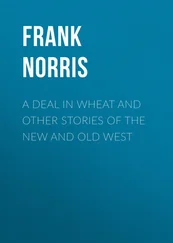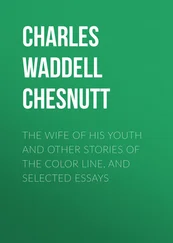George Washington’s greatest fear was that these United States would fall apart. He worried that individual states would not be able to preserve their own internal order, private property rights, or the validity of their contracts. He worried about lawlessness, anarchy, and chaos taking root in one state and then spreading across the country.
As Washington bade farewell to Madison on that crisp autumn evening, he had no way of knowing that those fears were less than one year away from becoming reality.
The Hancock Manor
30 Beacon Street
Boston, Massachusetts
Nine months earlier: January 27, 1785
“Well, there you have it!” the tall, slim man exclaimed as he finished affixing his grand, sprawling signature to the official document before him.
Though that signature read “John Hancock,” the document was not the Declaration of Independence, nor was the place Philadelphia, or the date July 4, 1776. Instead, it was nearly a decade later, and the Honorable John Hancock, looking far older than his forty-nine years, sat at a desk in Boston’s Beacon Hill and made his resignation as governor of Massachusetts official.
“That’s it!” he added for emphasis, hobbling toward the door on his gout-ridden foot. “Time to rest and get well. This body is simply worn out from service to its country. And, I suppose, service to a few other things as well!”
Everyone in the commonwealth knew very well of John Hancock’s pronounced taste for the finer things in life. Some suspected, however, that it wasn’t really gout or illness that plagued John Hancock, but rather the events occurring in Massachusetts’ rural, western areas. Farmers and townsfolk alike were angry. Personal bankruptcy cases overwhelmed the courts. Massachusetts’ state government suffered from massive debt, and its legislature, the General Court, had drastically raised property and poll taxes to pay it off.
“I wish I had gout!” Lieutenant Governor Thomas Cushing retorted. But instead of gout, Cushing now had, at least temporarily, the governorship—and all of the problems that came along with it.
“Yes, I hear you, Mr. Cushing,” Hancock answered. “There’s an anger out there. And it’s been brewing for years. Where will it end?” Hancock shook his head. Was the revolution really fought for this mess?
“I don’t blame them. Not entirely, anyway,” he continued. “The new taxes go to pay off the bonds issued during the war. But who gets the money? Not the patriots who originally bought the bonds to help secure our liberty. Or the officers and men who bled at Lexington or Concord and kept fighting on through Yorktown. No, it’s the speculators who bought the paper for pennies on the dollar. They own the bonds—and now they own the citizens of this fine commonwealth as well.”
Hampshire County Convention
Hatfield, Massachusetts
Nineteen months later: August 24, 1786
“Then, it’s agreed!”
“Of course, it’s agreed!” came the impatient retort. “We have been here for three days and we know what we want!”
This was an unruly group, with representatives from fifty towns located in western Massachusetts’ Hampshire County. They had aired their grievances and now had to present a united front against the state government in Boston. But deciding on exactly what that unified front would be was proving difficult.
Many of the men at the meeting were battle-hardened veterans of the Continental Army. One of them, Colonel Benjamin Bonney, was also acting as the meeting’s chair. “So it’s settled, then,” Bonney said. “We will send the petition to the General Court and to Governor Bowdoin.”
“Governor Bowdoin!” The name was shouted by a man in the back of the room; the words spat out as if it were Lucifer’s name itself. “That’s a waste of good Massachusetts paper! Our esteemed new governor, as we all know, is one of the biggest bondholders in the entire commonwealth. It is for him and his kind that we are bled white with taxes—so he and his Boston friends can be paid as much and as soon as possible. Yes, by all means, send our petition to King James Bowdoin—it will be fun to watch him use the paper to tally how much our taxes will increase next.”
“Tell ’em! Tell ’em!” came a rum-soaked exclamation from a young man in a threadbare coat and torn knee breeches. “Tell ’em we can’t afford to pay neither debts nor taxes. We want—we need —paper money printed and accepted for all transactions! We want no more of our money shipped to the Continental Congress! Tell ’em loud and clear: ‘To blazes with the Senate and the courts and lawyers!’ ”
“Yes, we will tell them all of that,” Colonel Bonney reassured him. “That’s what we have agreed to by the vote of all free men present.”
“And, one more thing!” came a Scotch-Irish burr-tinged demand from a man seated to Bonney’s right. “We want our demands dispatched to the conventions meeting at Worcester and Lenox as well. They’ll be very glad to hear that we Hampshire County men stand strong for our liberties.”
“Agreed, Captain Shays,” answered Colonel Bonney. “Couriers will leave in the morrow.”
And with that, Daniel Shays, a resident of nearby Pelham, tapped the residue from his simple clay pipe and took comfort in the thought that the common people—he among them—were finally standing up to the wealthy merchants and lawyers of Boston town.
Court of Common Pleas
Hampshire County Courthouse
Northampton, Massachusetts
August 29, 1786
Captain Daniel Shays had not originally cared much for protest. But now, as he stood before Northampton’s Hampshire County Courthouse and pondered the accelerating tumult around him, he quickly reconsidered that position.
Shays was approaching forty years of age and he looked every bit of it. He had been born poor, and life had not done much better by him. The little land he owned called for endless, backbreaking work and seemed to result in nothing but an increasing pocketful of debts.
Shays had earned his fine title of “captain” during the revolution, fighting at Saratoga, Bunker Hill, Lexington, and Stony Point—the last engagement under the great Marquis de Lafayette, who had bestowed upon him an elegant gold-handled sword. Shays was, by all accounts, a good soldier, but there were some things about him that rankled his fellow officers. For one thing, he had received his commission for having recruited the private soldiers who served under him, not for any actual battlefield merit. There was also the matter of that sword. Any other patriot would have treasured it, but Shays had quickly sold it to pay a twelve-dollar debt.
And there was one other thing that bothered some of the other officers: in 1780, when pay had run short and morale had run low, many—too many—of George Washington’s officers ingloriously departed for home.
Captain Daniel Shays was among them.
• • •
Five hundred men marched on Northampton from Daniel Shays’ hometown of Pelham. Another column of men, led by Captain Joel Billings, approached from Amherst. Hundreds more swaggered north from West Springfield under the leadership of Captain Luke Day, another veteran of Lexington. Still more rough-and-ready protesters streamed in from the hill towns to the west. They sported sprigs of green hemlock in their battered hats, carried flags, and marched to the sound of fifes and the threatening beat of drums. Some came outfitted with swords and flintlock muskets; others were armed with just sticks and bludgeons. But this was a real army—at least as real as the one that had appeared in Lexington in April 1775—and look what they had accomplished.
In all, fifteen hundred men had descended upon Northampton’s courthouse, where Hampshire County’s Court of Common Pleas was scheduled to be in session that morning. The sheer size of the crowd made it difficult for the three bewigged, black-robed justices and their clerk to enter the courthouse. “Allow us in,” Judge Eleazar Porter demanded. Derisive laughter rang through the crowd. “You might care to rethink that request, your honor,” snapped Captain Luke Day. “It looks like the people have a different idea about who’s meeting where and when from now on.” Day liked talking as much as he liked soldiering.
Читать дальше
